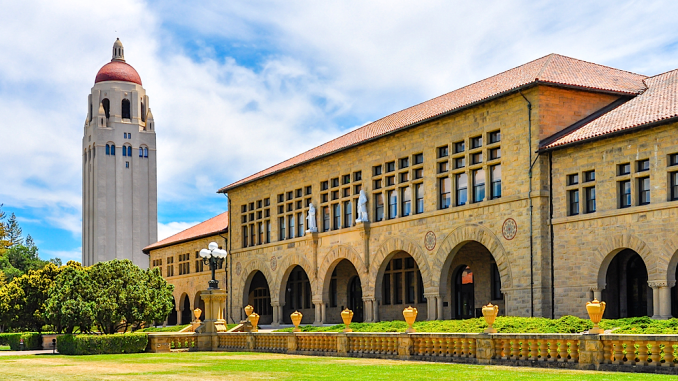
Editorial opinion of the Daily Post
(Originally printed in the Post on Wednesday, April 17)
The Palo Alto school board needs to drop the side agreement it’s made with Stanford for funding to cover the additional students from Stanford’s expansion.
There’s nothing wrong with the school board fighting for compensation and facilities to handle the expected influx of students if Stanford is given permission from the county to expand by 3.5 million square feet.
But the agreement school Superintendent Don Austin unveiled Monday (April 15) comes up short in many ways, and it allows the students of the district to become pawns in the tug of war over the growth permit Stanford is seeking.
That’s because this agreement is based on the condition that Stanford gets a permit from the county that’s to the university’s satisfaction. That enables Stanford to say to the county, “If you don’t give us what we want, we won’t give the school district and its students what they deserve.”
A hostage situation
In other words, Stanford would be able to use the Palo Alto Unified School District as leverage against the county in the approval process. Stanford could figuratively hold the school district and its students hostage in the negotiations with the county.
We think the school board was well intentioned in negotiating this deal, but we can’t say the same thing for Stanford. This move is deeply cynical on their part and should be called out as such.
And the deal the school district reached with Stanford comes up short in a number of ways.
• First, Stanford’s willing to pay $5,800 for each new student that comes from the university’s tax-exempt housing. However, the district’s cost of educating a student is $19,200. Stanford should be paying more. If they stick with the $5,800 amount, the taxpayers in the community will have to fill the gap. Stanford shouldn’t be able to externalize its costs onto the taxpayers.
• Second, there are already two elementary schools on campus — Nixon and Escondido. With an expected increase of 275 students by 2023 and 500 more by 2029, where will these kids go? The agreement anticipates that they’ll be shoved into Nixon and Escondido. Yet both of these schools are packed already, with 527 kids at Escondido and 446 at Nixon.
Stanford is offering $1 million to help accommodate those kids. That’s not enough to build classrooms for 275 to 500 students.
• Third, there’s the elusive third elementary school. The district has long expected that it would need another elementary school on the west side of campus.
The agreement says that in the year 2032 — 13 years from now — the university would meet to discuss the “possibility” of getting a school site from Stanford on Sand Hill Road, possibly on the land now occupied by Oak Creek Apartments at 1600 Sand Hill Road.
There’s no commitment for a third school, just a promise that there will be a conversation.
A violation of trust
There’s no reason why the school board should trust that Stanford will keep its promises. When Stanford entered into an agreement with the county to draft a development agreement, one of the restrictions was that Stanford wouldn’t negotiate with others over the agreement. This deal with the school district violates the rules of the development agreement process. That’s why County Supervisor Joe Simitian called a halt yesterday (April 16) to the development agreement negotiations. Stanford broke the rules. So why should the school district trust the university?
This agreement will likely go to the school board for a vote next week. Unfortunately, two of the board’s sharpest minds — Todd Collins and Ken Dauber — can’t participate because their wives work for Stanford.
We strongly recommend that the board drop this agreement and wait to negotiate a better deal with Stanford after the county process concludes. It’s not in the district’s interests to be used by Stanford as leverage in the negotiations over the county permit.
The county, led by Simitian, is trying to drive a hard bargain with Stanford to get the university to fully mitigate the impacts of housing, traffic and other problems that would come from this massive expansion. The school board shouldn’t be giving Stanford leverage in its negotiations with the county.




1 – Why should Stanford accept an agreement with the school district that was not contingent on getting its development plans approved?
If no development plans are approved why should Stanford pay a penny to the school district?
2 – If Stanford has a limit of how much it is prepared to spend to get a development agreement, as I suspect it does, then Simitian’s concern may be the $140 million the school board took off the table means that much less that Simitian can get for other purposes.
So that begs the question – does Simitian want the school district to get less so that he can get more for other purposes? If not then why complain about this agreement?
3 – Stanford has, as does every landowner, development rights consistent with the County’s General Plan. The County can require that Stanford mitigate the demonstrated environmental impacts of its development but the County cannot prohibit Stanford from exercising its development rights any more than the city could prohibit a residential land owner from building a home that complied with its zoning ordinance.
Any attempt by the County to overreach on this issue will end up in court and will be resolved in Stanford’s favor.